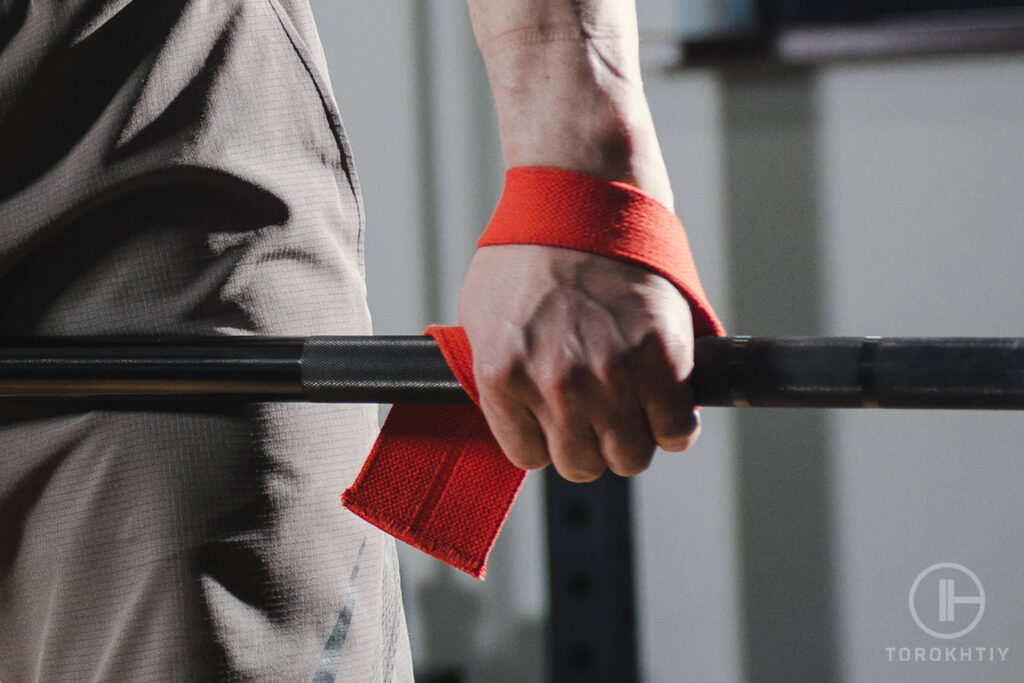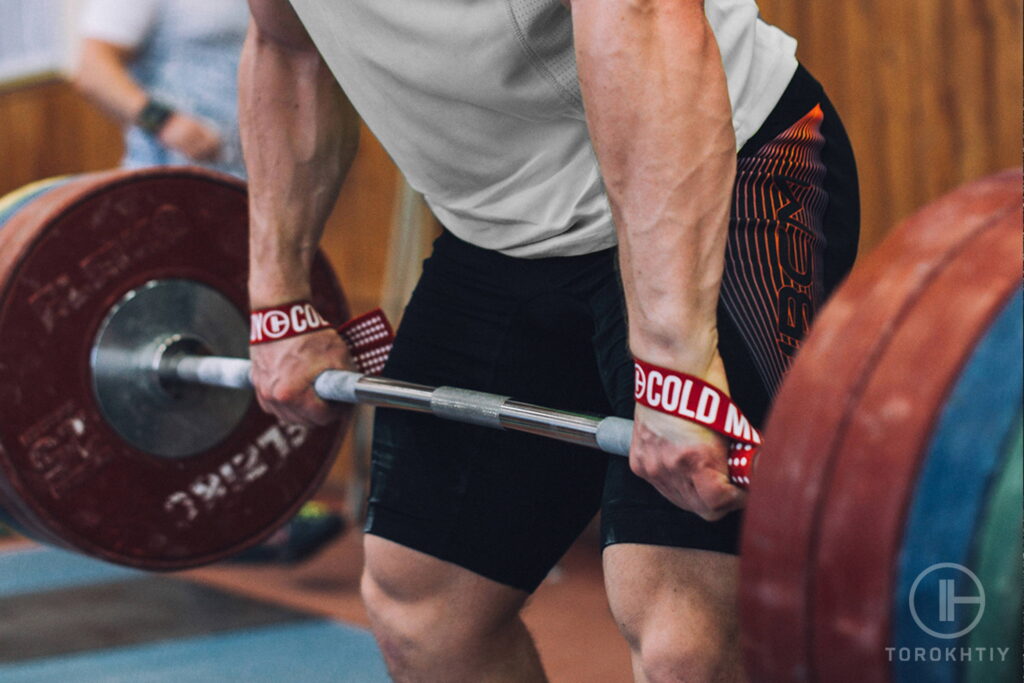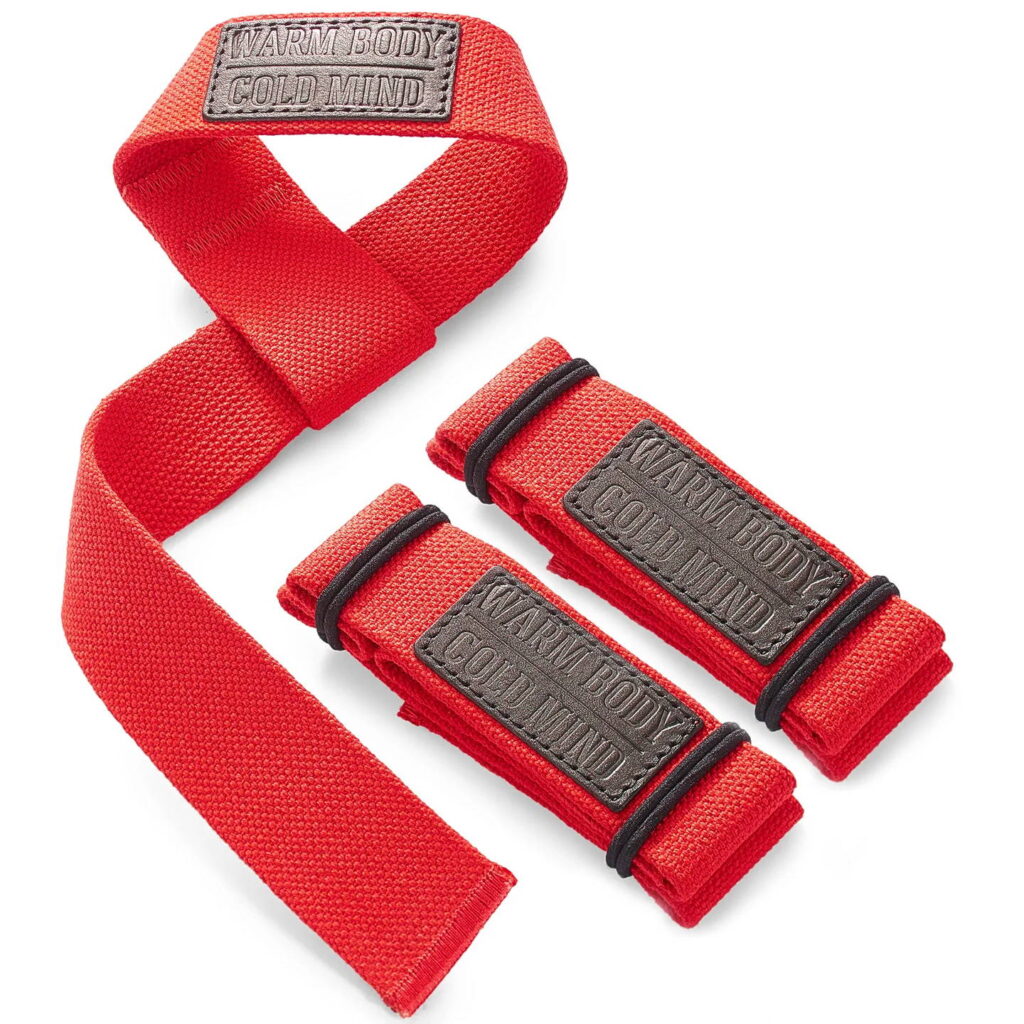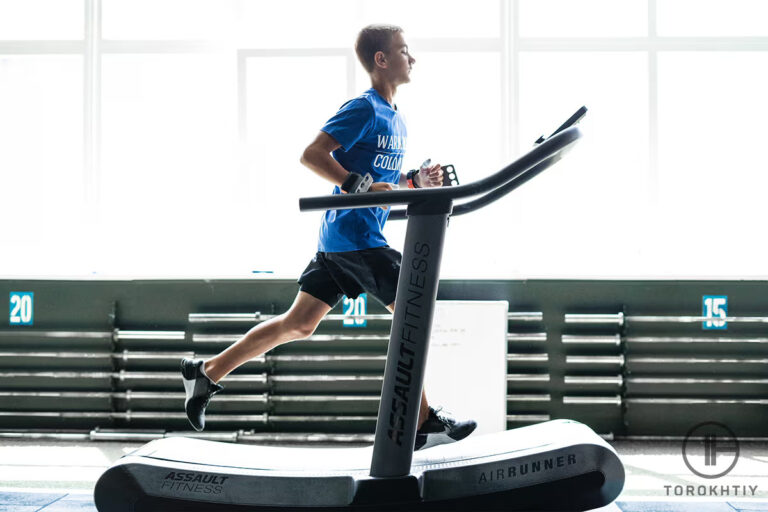How to Use Deadlift Straps: A Step-By-Step Guide
Imagine deadlifting without having to worry about your grip. Sounds satisfying, right? Protecting your wrist should be a priority before lifting that heavy weight and that’s completely possible with the help of deadlift straps. If you’re looking for a guide on how to use deadlift straps, this article is for you.
How to use straps for a deadlift? Just slip one end of the strap through the other to create a loop and slip your hand there, adjusting until the loop is tight and putting the strap on to your other hand. Then, loop the strap’s hanging end around the bar about 2-3x.

What are lifting straps?
Lifting straps, also referred to as wrist straps, are basically pieces of cotton, nylon, or leather sewn together and wrapped around the wrist and the bar. These are exceptionally useful during deadlifts or heavy pulling exercises. Once you find yourself in the world of power sports and weightlifting, chances are high that you’ve already seen one of these long straps hanging from the weightlifter’s wrist in between reps.
Before going into that deadlift, you’ll most likely notice that brief dancing motion lifters do. This is actually these guys attaching and securing the deadlift strap to the barbell. Once the straps are tight enough, the lifter prepares, exhales, and moves the weight almost effortlessly—thanks to the mighty deadlift straps!
Why do you need straps for deadlift?
I can think of multiple reasons why you should definitely use deadlift straps. For one, a failing grip can hinder the maximum potential of your lift. Wrist straps allow you to train and fatigue your muscles without having to worry about your grip giving up prematurely. This means that these straps allow you to lift the maximum weights without losing your grip. Some people call this cheating, but really, who wants stunted progress just because of grip failure? Well, definitely not me!
More often than not, powerlifters fail to reach their truest muscular failure because their grip starts to break. While others argue that straps aren’t allowed in big competitions, best believe that even the best ones in the game use these during their training. Deadlift straps do not only make your current training efficient but also protect your wrist from potential injuries. For the massive benefit these little guys can provide, there’s really no reason why you shouldn’t put on deadlift straps.

How to use straps for a deadlift?
1. Slip one end of the strap through the other to create a loop.
2. Slip your hand through the loop you created.
3. Adjust until the loop is tight enough around the base of your hand.
4. Put the strap on to your other hand.
5. Position your right hand on the barbell.
6. Loop the strap’s hanging end around the bar about 2-3x.
7. Rotate your grip to tighten the loops.
8. Attach the wrist strap of your left hand to the barbell.

Now, allow me to give you a run-down on how to securely use these deadlift straps.
1. Slip one end of the strap through the other to create a loop.
Wrist straps are usually 2 feet long with one end having a 2-inch hole on it. Holding the end with the hole, insert the unlooped end through. Take note that 10 inches or so of the strap should be fed through the little loop. This should create a huge loop that’s about 5 inches in diameter.
2. Slip your hand through the loop you created.
Close your hand and thread it through the wrist strap’s loop and wrap the strap around your palm. The dangling strap ought to extend over your fingertips as it passes through your palm. Now check if the cross formed by the straps is on your front hand. If not, flip the strap 180 degrees to correct the placement.
Quick tip: It’s a lot easier to strap your non-dominant hand first so you can use your dominant hand freely.
3. Adjust until the loop is tight enough around the base of your hand.
Pull the dangling end of the wrist strap until the loop is secure around your hand. The strap should be snug enough to keep you in position without impairing your blood flow. Put on the strap relatively low on your hand, about midway between your wrist bone and the base of your thumb.
Make sure to not tighten the strap at the level of your wrist because a strap that’s too high while lifting may lead to an injury.
4. Put the strap onto your other hand.
Apply the second wrist strap to your opposite hand using the same procedure. Make a wide loop out of the strap and put your hand through it. Keep the strap’s loose end hanging down in front of your hand, not behind it. Then, secure the strap until it’s tight enough with the use of your fingers. Be cautious as to where you tighten it up. Remember: don’t strap too high!
5. Position your right hand on the barbell.
Start by placing the barbell on the ground and tying the strap around it. With the strap hanging down below, place your right hand across the bar. The distance between the bar and your right wrist should be no more than 2 inches. If you’re preparing for a deadlift, make it a point that the weights are already installed on the ends of the barbell before strapping.
6. Loop the strap’s hanging end around the bar about 2-3x.
Loop the hanging strang up from under the bar while keeping your right hand around two inches from the bar. You may accomplish this with either hand by raising the strap up and around the bar with your left hand or by wrapping it around the bar with your right thumb and finger. The loops should overlap one another by about ¼ inch.
Throughout the process, make sure that your grip remains to be tight. This way, the strap will be able to wrap snugly around the bar. Ensure as well that there are no any loose ends dangling to take away any chance of you stepping on them as you lift.
7. Rotate your grip to tighten the loops.
Rotate your grip on the barbell such that your knuckles are sliding back toward your body as you add each additional loop. The strap around the barbell will tighten as a result. The easy way to remember this is to try imagining how to maneuver a motorcycle’s grip—that same motion should be used in tightening the loops.

8. Attach the wrist strap of your left hand to the barbell.
You won’t be able to tighten the second strap with your right hand since it’s already fastened to the barbell. To compensate, push the hanging strap under and up around the barbell 2-3x using your left hand’s thumb and fingers. Once the strap has been looped, firmly hold the bar and turn your grip back toward your body. Doing so will make the strap around the bar tighter.
Once both straps are tight and secure, it’s time to tense those muscles up and deadlift away! And once you’re done with all your reps, just let go using your hands and the straps will automatically unloop from the bar.
What to look for in deadlifting straps?
When looking for the best deadlift straps for you, you should be on the lookout for three crucial things: safety, comfort, and durability. For maximum safety, choose a heavy-duty wrist strap. Remember that your straps should be able to withstand heavy weights. Additionally, opt for padded deadlift straps for utmost comfort.
After trying multiple straps out there, we highly recommend Warm Body Cold Mind’s Lasso Lifting Wrist Straps. These straps can support you in progressing your lifts to their full potential, thanks to their sturdy build. It is meticulously made of cotton, neoprene, and natural leather that will surely stand the test of time (and weights!). The wrist straps also come with neoprene padding, offering extreme comfort for your hands and wrists.
With these straps rated to hold out against up to a whopping 350kg of weights, you can focus entirely on your performance without the fear of the straps giving away. You can rest assured that you can boost your reps and load while eradicating the risk of any wrist and hand injuries. What’s even better? Warm Body Cold Mind generously offers a 30-day full money-back guarantee to assure you of your money’s worth. Indeed, this deadlift strap is hands-down the best one we’ve tried to date.
FAQ
How much do straps add to a deadlift?
Although this is highly dependent on the exercise you’re doing, wrist straps can often boost your lift up to 20-30% more compared to lifting with just your bare hands.
When should I start using straps?
It would be safe to wait at least 3 months of consistent lifting before using wrist straps. You should learn to execute the exercises properly and safely first prior to strapping.
Is using lifting straps cheating?
No, lifting with straps is definitely not cheating. In fact, even professional powerlifters and bodybuilders use straps in their training. These do not only pave the way for reaching true muscle fatigue but also save your wrist from potential injuries.
Are lifting straps better than gloves?
First and foremost, lifting straps and gloves do not serve the same purpose. Wrist straps help you exhaust your muscles by decreasing any possible negative influence from your grip while gloves protect the hand from callouses. So to answer the question: no, gloves are not better than lifting straps simply because their benefits vary.
Conclusion
Using wrist straps for deadlift can tremendously boost the rate of your progress while ensuring your safety. By all means, use this guide in learning how to use deadlift straps safely. Remember, safety first!
Did we miss anything? If we did, feel free to share your thoughts and questions in the comment section below.
Also read:
- How to Use Figure 8 Straps
- Pull up Straps
- Lifting Hooks Vs Straps
- Lifting Grips Vs Straps
- Leather Vs Nylon Vs Cotton Lifting Straps
- Weightlifting Straps
References:
- Kinematics and Kinetics of Multiple Sets Using Lifting Straps During Deadlift Training // Journal of Strength and Conditioning Research:
https://journals.lww.com/nsca-jscr/fulltext/2015/12000/Kinematics_and_Kinetics_of_Multiple_Sets_Using.18.aspx
Why Trust Us?
With over 20 years in Olympic Weightlifting, our team does its best to provide the audience with ultimate support and meet the needs and requirements of advanced athletes and professional lifters, as well as people who strive to open new opportunities and develop their physical capabilities with us.
By trusting the recommendations of our certified experts in coaching, nutrition, dietology, and sports training programming, as well as scientific consultants, and physiotherapists, we provide you with thorough, well-considered, and scientifically proven content. All the information given in the articles concerning workout programming, separate exercises, and athletic performance, in general, is based on verified data. We ensure that you can rely on our professionals’ pieces of advice and recommendations that can be treated as personalized ones which will benefit you and fully meet your needs.
The product testing process is described in more detail here
Author: Ihor Shymechko
Pro Olympic Weightlifter, Coach
Best Results: Snatch – 208 kg,
C&J – 240 kg
Ihor has been a professional weightlifter since 1996, boasting over two decades of competition experience. His notable achievements include clinching the European Championship in 2009 and securing a silver medal in the 105kg division at the Senior World Championships in 2011. Ihor represented his country in the 2008, 2012, and 2016 Summer Olympics. After retiring from competitive weightlifting, he transitioned to coaching, leveraging his vast experience to guide athletes who now compete on both national and international stages.







